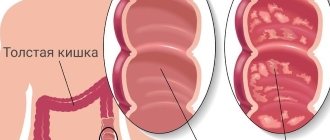Anesthesiologist-resuscitator
Smirnov
Igor Valerievich
19 years of experience
Leading anesthesiologist-resuscitator of the highest category, member of the European Society of Anaesthesiology
Make an appointment
Coma is a life-threatening pathology of consciousness caused by damage to brain tissue. The patient completely loses contact with the outside world. Coma can occur due to metabolic (intoxication with metabolic products or chemicals), organic (deformation of brain areas) reasons.
The key symptom is an unconscious state, the patient’s pupils do not react even to strong stimuli. To diagnose pathology, CT, MRI, and laboratory tests of blood plasma are used. Therapy is aimed at combating the cause of the coma.
Symptoms and signs of coma in adults
As already noted, the main symptoms of coma are the absence of any mental activity of the patient. Other symptoms of coma depend on the cause that caused damage to the brain structures.
- Body temperature indicators. Coma, which is caused by overheating, is accompanied by elevated body temperature (up to 43 degrees) and dry skin. Intoxication with alcoholic beverages and sedatives is associated with hypothermia (temperature up to 34 degrees).
- Inhalation/exhalation frequency. Slow breathing is a sign of a hypothyroid type coma (lack of thyroid hormones). Deep breathing is common in patients with pneumonia, brain cancer, and kidney failure.
- Blood pressure, heartbeat. A decrease in the number of heart contractions indicates that the person has fallen into a coma due to an acute disease of the heart muscle. Arterial hypertension is observed in patients who have become comatose due to a stroke. Low blood pressure indicates a diabetic coma, intoxication with sedatives, or a heart attack.
- Color of the skin. The skin turns cherry color if a person is poisoned by carbon monoxide. Blue ends of the fingers indicate a reduced concentration of oxygen in the blood plasma. Pale skin is typical for patients who have lost a lot of blood.
- Contact with the environment. With a mild coma, the patient can make different sounds, which suggests a favorable prognosis. As the coma worsens, the ability to make sounds disappears.
Are you experiencing coma symptoms?
Only a doctor can accurately diagnose the disease. Don't delay your consultation - call
Severity of pathology
Classifications of degrees of coma adopted in Russian neurology are largely similar. According to the dynamic approach developed by Bogolepov, the degrees of coma are stages that replace each other as the condition deepens. The basis of staging is the gradual shutdown of brain functions in the process of deepening the coma. First of all, phylogenetically young formations suffer, which is accompanied by a “release” of the functions of underlying structures.
There are:
- moderate first degree coma;
- pronounced second degree;
- deep (third degree).
Moderate coma is marked by the absence of obvious signs of impairment of vital functions, while the patient retains pupillary reactions to light and corneal reflexes. There may be some increase in muscle tone over time. The victim in a coma lies with his eyes closed, and, unlike stupor, he has no involuntary motor activity.
Second degree coma has a slightly different clinical picture:
- impairment of respiratory activity, including the formation of respiratory failure;
- shortness of breath, tachycardia, cardiac arrhythmia;
- unstable hemodynamics;
- sluggish pupillary reactions to light;
- dysphagia;
- decreased muscle tone;
- sluggish tendon reflexes;
- inconstancy of the bilateral Babinski reflex.
Deep coma is also called atonic. In this case, the patient develops respiratory failure, hemodynamic instability and lack of pupillary response to light are noted. The deep type of pathology is dangerous because it can turn into an extreme coma, in which a person’s spontaneous breathing function is disrupted and the bioelectrical activity of the brain stops.
In practice, the clinical division of comatose states into degrees is conditional, since they have a certain level of dynamism, because with adequate treatment, the patient may experience regression of the pathology, and otherwise the comatose state may progress.
Coma of the fourth degree (extraordinary) is equivalent to brain death, in which extensive cell death of its tissue begins. Spontaneous breathing is interrupted, but cardiac activity remains.
Also, all comatose lesions are divided into two general groups:
- primary;
- secondary.
In turn, primary comas are represented by cerebral and structural pathologies, and secondary comas are represented by metabolic and dysmetabolic ones.
Dysmetabolic coma can be:
- endogenous;
- exogenous;
- infectious-toxic;
- toxic.
Causes
Why do they fall into a coma? The main causes of this condition in adults:
- organic factors (stroke, gunshot wound, bruise, bleeding into the brain);
- internal chemical compounds. They are metabolic products that appear due to organ diseases;
- external chemical compounds. Poisoning of the central nervous system can occur due to an overdose of drugs, sedatives, or neurotropics.
The reasons listed above explain how people fall into a coma. Particularly worth highlighting is a factor that combines signs of organic and chemical causes. This is an increase in pressure inside the skull. A similar pathology is observed with head injuries and neoplasms in the nervous system.
Treatment prices:
| Service | Price, rub) |
| Types of therapies | |
| Standard detoxification therapy | 3 500 ₽ |
| Double Detox Therapy | 6 000 ₽ |
| Enhanced Detoxification Therapy | 7 500 ₽ |
| Maximum detoxification therapy | 9 500 ₽ |
| Quick sobering up at home | 7 500 ₽ |
| Hospital at home 1 day | 22 000 ₽ |
| Advanced hospitalization | 15 000 ₽ |
| Treatment in hospital | |
| Accommodation | |
| Economy chamber (6 beds) | 2 000 ₽ |
| Standard room (4 beds) | 3 000 ₽ |
| Increased comfort (2 seater) | 5 500 ₽ |
| VIP chamber (1 person) | 12 500 ₽ |
| Individual post 24/7 | 5 000 ₽ |
| Medical and social rehabilitation 21 days | 140 000 ₽ |
| Service | Price, rub) |
| Initial consultation with a narcologist | for free |
| Consultation with a psychologist | 3 000 ₽ |
| Psychiatrist consultation | 5 000 ₽ |
| Coding at home Torpedo | 7 500 ₽ |
| Express output and encoding (doublet) | 13 500 ₽ |
| Coding using the Dovzhenko method | 12 000 ₽ |
| Hypnosis classic session | 13 000 ₽ |
| Ericksonian hypnosis session (NLP) | 8 000 ₽ |
| Coding method Torpedo | 5 500 ₽ |
| Double block | 8 000 ₽ |
| Esperal injection for 1 year | 9 900 ₽ |
| Tetlong for 3 months | 10 500 ₽ |
| Esperal gel for 1 year | 15 000 ₽ |
| Selincro course of therapy | 12 500 ₽ |
| Implantation of Disulfiram for 1 year | 18 000 ₽ |
| Vivitrol injection for 1 month | 26 000 ₽ |
| Naltrexone stitching for 3 months | 35 000 ₽ |
| Neuroimplantation Prodetoxon for 6 months | 47 500 ₽ |
| Narcopsychotherapy session | 50 000 ₽ |
| Neutralization of encoding | specify |
| Psychodiagnostics / pathological diagnostics | 7 500 ₽ |
| Psychotherapy session | 5 000 ₽ |
| Family psychotherapy | 6 000 ₽ |
| Outpatient rehabilitation in Moscow | 33 000 ₽ |
Expand
ANONYMOUS TREATMENT OF DRUG ADDICTION
How to get to us
A team of doctors will quickly arrive at your address, carry out the first resuscitation measures and urgently deliver the victim to the intensive care unit of a drug treatment clinic.
Article verified by an expert
Terekhova Anna Vladimirovna
psychologist-consultant on socio-psychological work with addicted clients and their families. More than 10 years of experience.
Similar articles:
Children's drug addiction
How is alcoholism treated at home?
Screw: what is it, the effect and consequences of use
The drug salt: signs of use and treatment
How long does heroin last in urine?
One comment on ““Drug coma””
- Alexandra:
June 29, 2022 at 10:57 pm
Drug coma is a condition characterized by depression of the central nervous system caused by drug use. Coma is often a consequence of taking opiates, barbiturates, salts and spice. Due to the powerful effects such psychoactive substances have on the body, even in microscopic doses, an overdose is more than likely.
Answer
When to see a doctor
If a person falls into a coma, you should immediately consult a doctor. There can be no exceptions here. First of all, the patient will need the help of a resuscitator who will try to quickly remove the patient from the pathological condition. If resuscitation measures have no effect, treatment of the patient must be started.
Which specialist will treat the patient depends on the cause that caused the disturbance in the state of consciousness. You can seek qualified medical help at our clinic. We have specialists who understand how to work with people who have fallen into a coma. The choice of a doctor who will treat coma in the Central Administrative District depends on the cause that led to the development of the pathology.
Anatomical and functional features of the central nervous system
Being the central regulator of all processes occurring in the body, the brain operates in an active metabolic mode. Its weight is only 2% of body weight (about 1500 g). However, for the uninterrupted functioning of the brain, 14-15% of the total volume of circulating blood (700-800 ml) must flow into and out of the cranial cavity every minute. The brain uses 20% of all the oxygen the body consumes. It is metabolized only by glucose (75 mg per minute or 100 g per day).
So, the physiological functioning of brain tissue depends on adequate perfusion with its blood, the content of a sufficient amount of oxygen and glucose, the absence of toxic metabolites and the free outflow of blood from the cranial cavity.
A powerful autoregulation system ensures smooth functioning of the brain. Thus, even with significant blood loss, the perfusion of the central nervous system is not impaired. In these cases, a compensatory reaction of centralization of blood circulation with ischemia of less important organs and tissues is activated, aimed primarily at maintaining adequate blood supply to the brain. The body reacts to another pathological condition - hypoglycemia - by increasing blood flow to the brain and increasing the transport of glucose here. Hyperventilation (hypocapnia) reduces blood flow to the brain; hypoventilation (hypercapnia) and metabolic acidosis, on the contrary, increase blood flow, promoting the removal of “acidic” substances from tissues.
With significant damage to brain tissue, insufficient autoregulation or excessive manifestations of the compensatory reaction of the inflow and outflow of blood, the brain cannot voluntarily change its volume. The closed cavity of the skull becomes its trap. Thus, an increase in intracranial volume by only 5% (with hematomas, tumors, hyperhydration, liquor hypertension, etc.) disrupts the activity of the central nervous system with the patient losing consciousness. In another pathology, excessive growth of cerebral blood flow leads to overproduction of cerebrospinal fluid. The brain tissue is compressed between the blood and the cerebrospinal fluid, swelling develops, and functions are impaired.
Traumatic destruction of brain tissue, edema and swelling, increased intracranial pressure, impaired circulation of cerebrospinal fluid, circulatory disorders and other damaging mechanisms lead to hypoxia of CNS cells. It manifests itself primarily as a disturbance of consciousness.
Diagnosis of coma in adults
To diagnose coma 1, 2, 3 degrees in the center of Moscow, the following methods are used.
CT. One of the most informative methods of radiation diagnostics. The advantages of this procedure include the following:
- fast scanning;
- it is possible to obtain thinly sliced images (up to 0.1 cm) without increasing the radiation dose to the patient;
- increased resolution, which allows you to obtain clear images of internal organs.
MRI. A modern diagnostic method through which the doctor can obtain images of sections of soft tissues and organs in different planes.
Blood analysis. Performed to determine the concentration of hormones in the blood plasma.
Myths and dangerous misconceptions in the treatment of coma in adults
Based on Hollywood films, people might have the idea that a first-degree coma is a kind of vacation, a break from the outside world. In the movies, the patient after a coma looks fresh and rested. However, in reality this is not the case. Many patients never fully recover after emerging from a comatose state. It is not uncommon for a person to remain disabled and bedridden for the rest of his life. For this reason, the family of a person who has fallen into a coma needs to prepare for long-term care for their loved one and provide him with moral support.
How long does a drug coma last?
The coma state is conventionally divided into 4 stages:
- Falling asleep
- Superficial stage
- Deep coma
- Death or recovery from a coma.
If a person falls into a deep coma while in a medical facility, a person can remain there for quite a long time. However, such an experience is extremely painful for the body and carries many negative consequences for the body. Therefore, it is very important to prevent this stage from occurring. To do this, it is necessary to provide the victim with medical assistance as soon as possible.
REMOVAL AT HOME
Prevention
Preventive measures are aimed at prompt treatment of diseases that can lead to a coma. If a person has suffered a stroke, he needs to periodically visit a doctor so that he monitors the condition of the patient’s body and can detect signs of coma in time.
You also need to stop drinking alcohol and drugs. People suffering from alcoholism and drug addiction are at risk. They are unable to control the amount of ethyl alcohol and drugs they take, so they risk getting an overdose and falling into a coma.
It is extremely important to monitor your health. You cannot ignore the recommendations of doctors and other specialists. A proper daily routine, sleep and eating patterns, giving up bad habits are just the minimum of what every person should remember.
If there are any contraindications to playing serious sports, then all of them should be abandoned. Physical activity is allowed, but it is important to maintain its degree. In some cases, only light exercises in gymnastics, fitness and any other sport where the load is minimal are allowed.
Any deviation from the general rules (especially for those people who are at risk) can lead to undesirable consequences. It is important not only to remember this, but also to follow all recommendations.
If you have any questions or do not know whether excessive loads are allowed for you, it is better to seek advice from relevant specialists. If necessary, they will carry out a series of diagnostic measures and, based on the results obtained, will give you a conclusion.
Prevention is the best measure in the fight against any pathology, regardless of its type and severity. And the health of each person is in his own hands. Doctors and other specialists can only guide you along the right path.
How to call a resuscitator
If you decide to go to our clinic in the center of Moscow for medical help, dial the ambulance number -. A team of our specialists will arrive at the address you specified to transport the patient to a medical facility and provide him with first aid.
All our specialists are highly qualified and have extensive medical experience. All diagnostic measures are carried out promptly. This is also due to the availability of modern equipment. Our doctors choose the most optimal treatment method, taking into account the characteristics of the disease and the patient’s body.
Our clinic is located at the address: Moscow, Central Administrative District, 2nd Tverskoy-Yamskaya Lane, building 10. The nearest metro station is Mayakovskaya (5 min walk).
Remember that if a person falls into a coma, he requires emergency assistance from specialists. The slightest delay can lead to the death of the patient.








